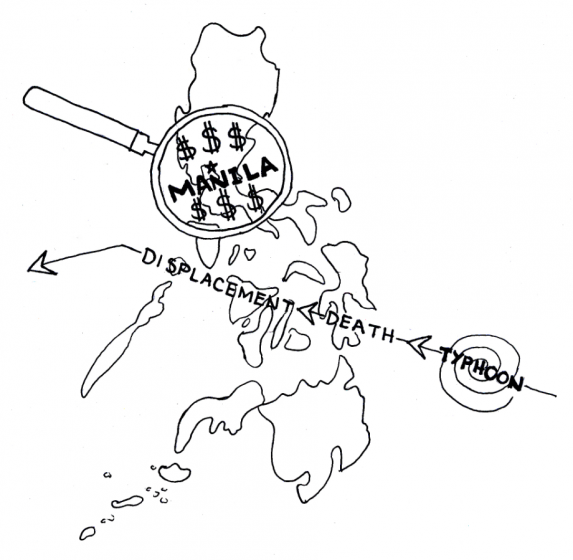The devastation of Typhoon Haiyan that occurred in the Philippines Nov. 8, killing nearly 4,000 people and rising, is rightly garnering massive media coverage.
In times of huge catastrophes, the framing and topics media choose to cover can dehumanize the severity of the situation, and draw attention away from what truly matters.
A recent article published by USA Today focused on the economic damages that could have occurred, while minimizing the actual number of lives affected. “While Typhoon Haiyan undoubtedly killed many thousands of people,” the article opens, “the storm’s path may have spared the Philippines from an even worse economic catastrophe.”
Though it’s true that the storm could have been much worse by damaging the capital of the Philippines, Manila, focusing on what wasn’t damaged does no good to correct what was, and insensitively marginalizes what the disaster did.
The article even ends on the note that the “Philippines are no stranger to costly storms.” Such an anecdote would be like saying that Hurricane Sandy or Katrina weren’t as economically bad as they could have been, because they didn’t hit Washington D.C, or because Americans are used to such storms.
The loss of thousands of people to a natural disaster begs more concern than the counting of money. It demands varied coverage that shows the full extent of the damage done to a country with nearly 100 million people.
According to the National Crisis Management Agency 3,976 are confirmed dead, over 18,000 people are injured and over 1,500 people have been reported missing. The Philippines government says there are 4 million people who have been displaced and 2.5 million people are in need of food.
A recent article by the Huffington Post called for focused media coverage on the people affected by the typhoon, rather than compare or scold the possible causes and outcomes of the disaster.
“Human pain and suffering cannot and should not be overlooked,” the article said. “The focus and attention the media brings to the situation on the ground is something the victims need for more than a few days or a week.”
There will always be time to talk about what could have been and the money involved. But when dozens of bodies are decomposing in a Tacloban mass grave waiting to be identified, 350,000 people are living in 1,500 evacuation centers, and refugees still do not know what happened to their loved ones more than 10 days after the disaster, focus should be centered on what actually happened and what can be done.
The role of the media is to report what has happened and cover the story of the people who need their voices, experiences and concerns presented for the world to hear. It is only than that everyone is exposed to the reality of the situation and learn what they can do to help those who need aid.
It’s a waste of time to draw a silver lining, contemplating how the situation could have been worse. For 2.5 million people finding a way to feed themselves and their families, and 4 million people displaced from their homes — this is the worst scenario possible.







